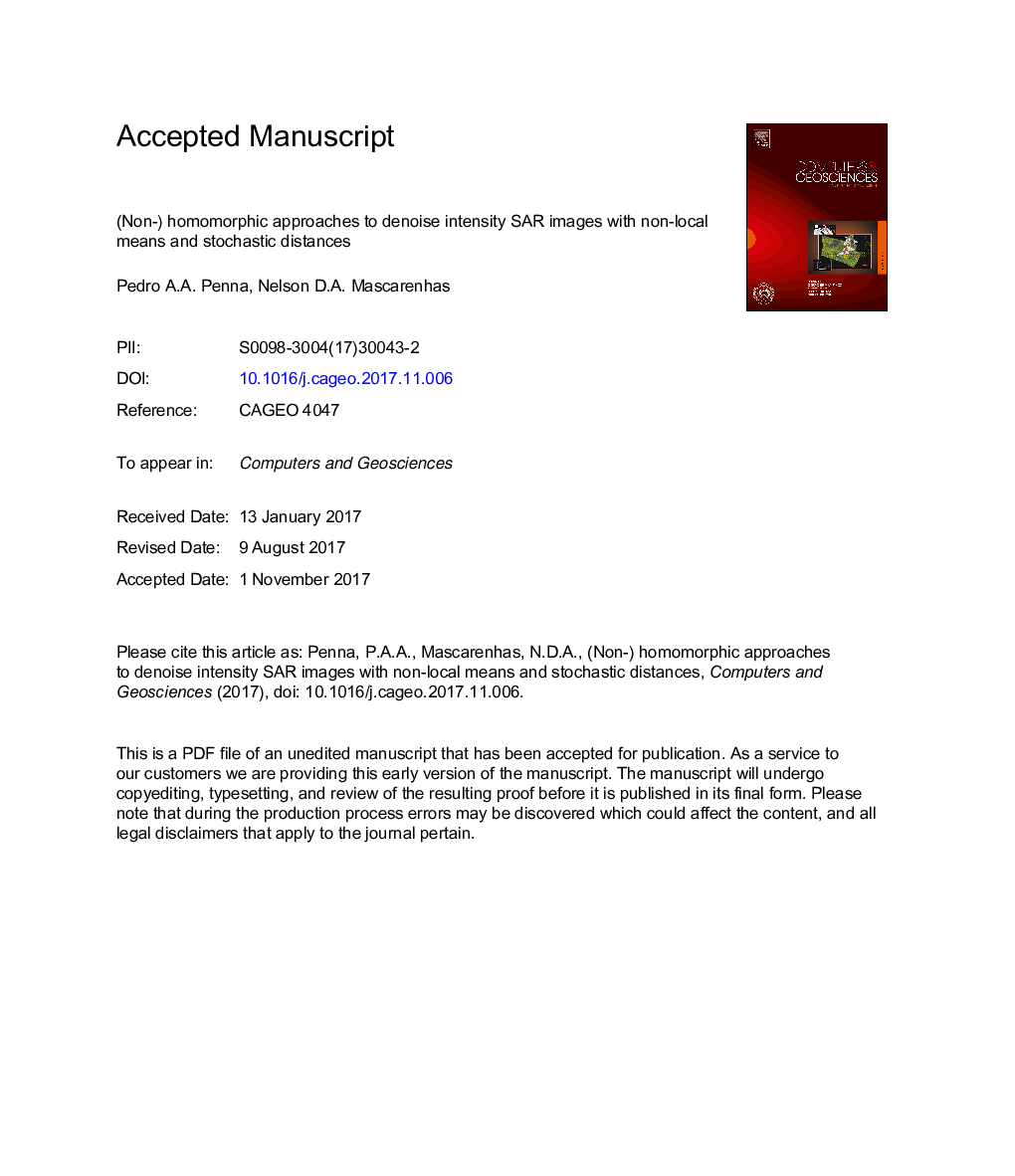| Article ID | Journal | Published Year | Pages | File Type |
|---|---|---|---|---|
| 6922227 | Computers & Geosciences | 2018 | 32 Pages |
Abstract
The development of new methods to denoise images still attract researchers, who seek to combat the noise with the minimal loss of resolution and details, like edges and fine structures. Many algorithms have the goal to remove additive white Gaussian noise (AWGN). However, it is not the only type of noise which interferes in the analysis and interpretation of images. Therefore, it is extremely important to expand the filters capacity to different noise models present in li-terature, for example the multiplicative noise called speckle that is present in synthetic aperture radar (SAR) images. The state-of-the-art algorithms in remote sensing area work with similarity between patches. This paper aims to develop two approaches using the non local means (NLM), developed for AWGN. In our research, we expanded its capacity for intensity SAR ima-ges speckle. The first approach is grounded on the use of stochastic distances based on the G0 distribution without transforming the data to the logarithm domain, like homomorphic transformation. It takes into account the speckle and backscatter to estimate the parameters necessary to compute the stochastic distances on NLM. The second method uses a priori NLM denoising with a homomorphic transformation and applies the inverse Gamma distribution to estimate the parameters that were used into NLM with stochastic distances. The latter method also presents a new alternative to compute the parameters for the G0 distribution. Finally, this work compares and analyzes the synthetic and real results of the proposed methods with some recent filters of the literature.
Keywords
Related Topics
Physical Sciences and Engineering
Computer Science
Computer Science Applications
Authors
Pedro A.A. Penna, Nelson D.A. Mascarenhas,
